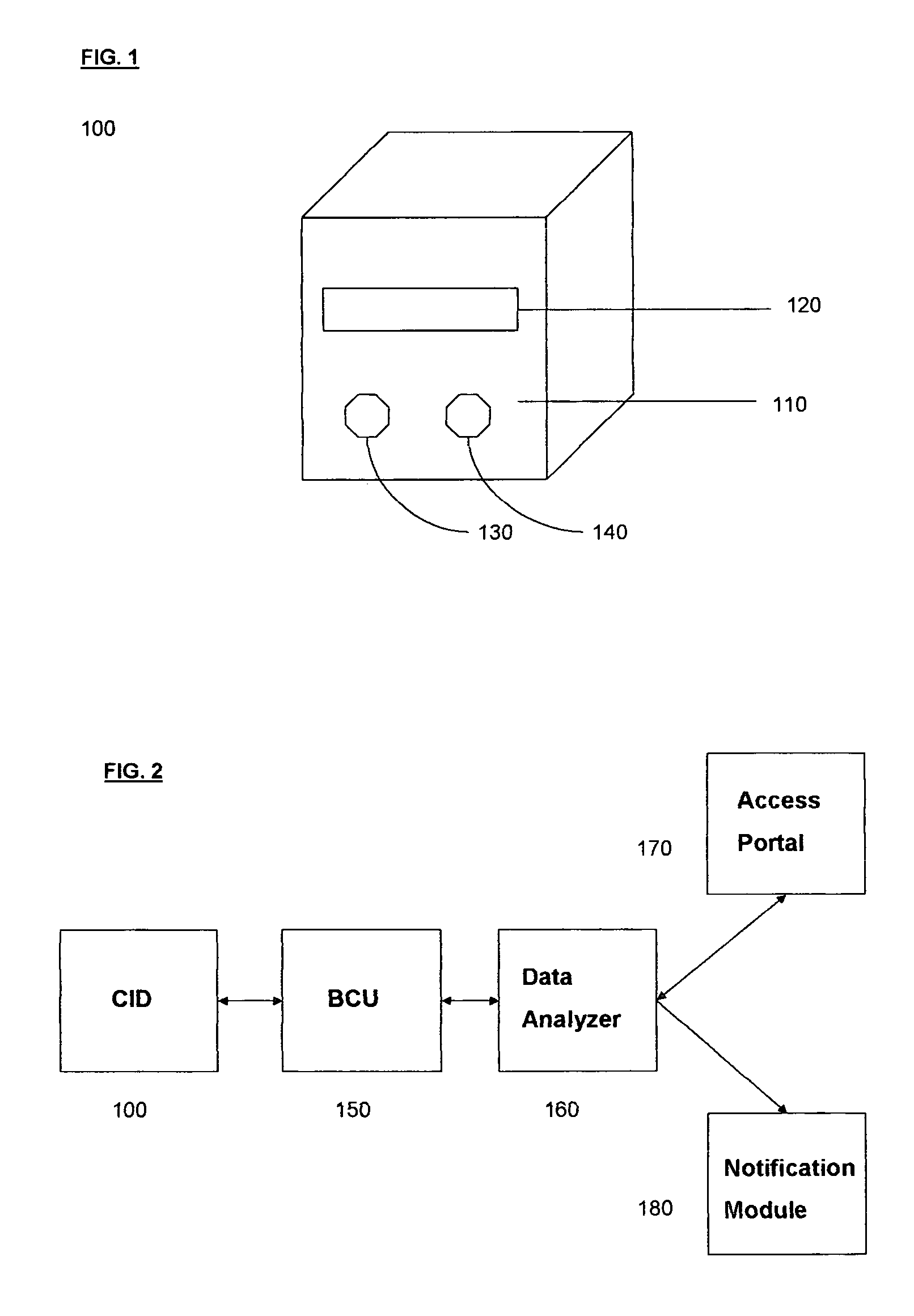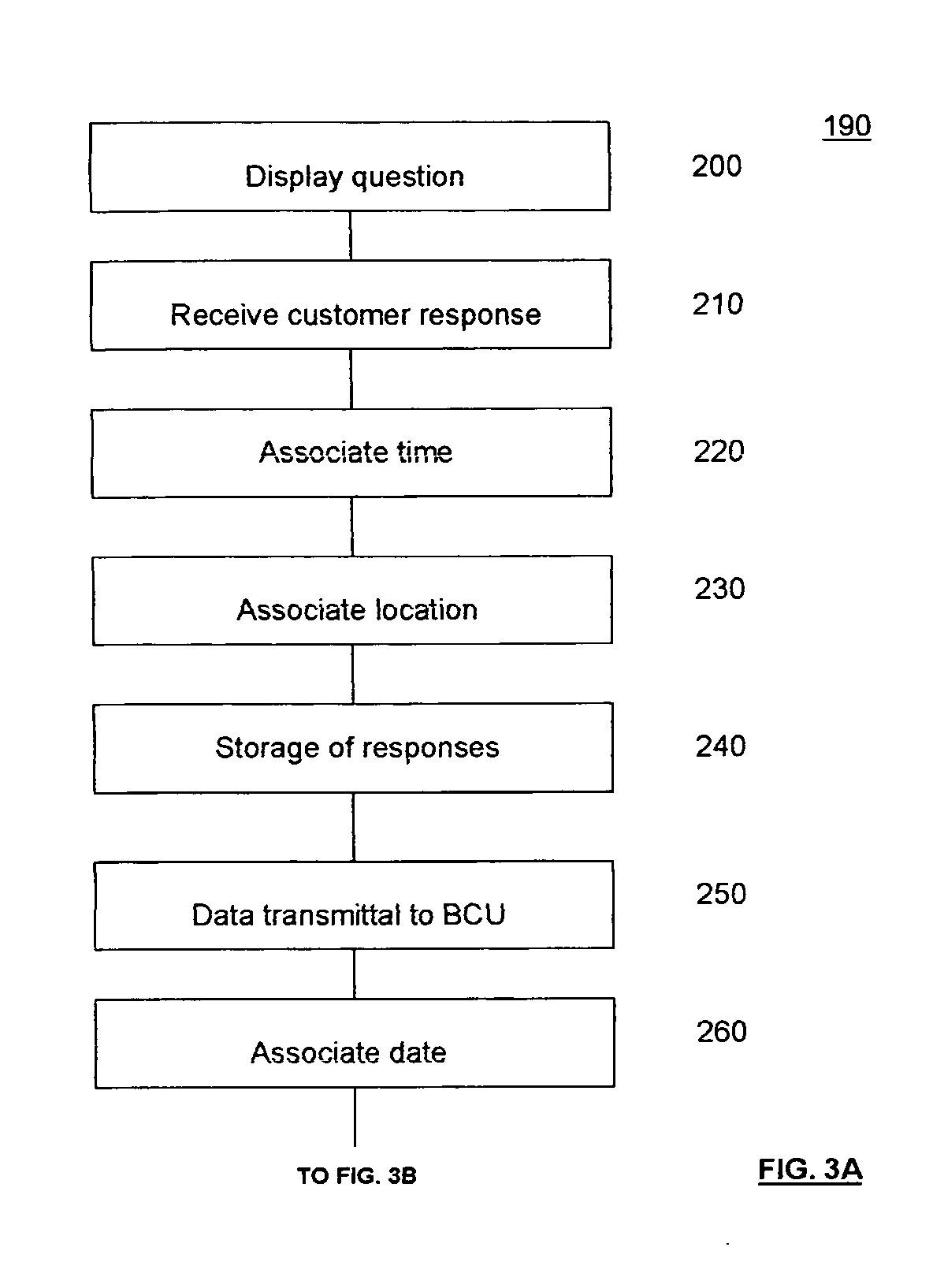Method for administering a survey, collecting, analyzing and presenting customer satisfaction feedback
a survey and customer technology, applied in the field of survey administration, can solve the problems of increasing validity, inverse correlation between customer response rate and cost to collect accurate data, and businesses facing high cost options
- Summary
- Abstract
- Description
- Claims
- Application Information
AI Technical Summary
Benefits of technology
Problems solved by technology
Method used
Image
Examples
Embodiment Construction
[0040] The following definitions apply to this disclosure:
[0041] Customer Interface Device or CID is a device that is capable of displaying survey questions, collecting data, associating parameters such as time and location, initiating follow-up questions, having its programming remotely changed, storing and transmitting collected data as well as a status of the CID's condition to a Base Control Unit, and communicating with the Base Control Unit. In one embodiment of the present invention, the CID is capable of random coupon distribution. According to another embodiment, the CID is capable of identifying a survey respondent by a code, such as a bar code, with a means such as a bar code scanner. According to another embodiment, the CID has a means to draw the respondent's attention, such as a flashing light.
[0042] Base Control Unit or BCU is a device that is capable of receiving data transmitted from the Customer Interface Device, associating parameters such as a date, storing coll...
PUM
 Login to View More
Login to View More Abstract
Description
Claims
Application Information
 Login to View More
Login to View More - R&D
- Intellectual Property
- Life Sciences
- Materials
- Tech Scout
- Unparalleled Data Quality
- Higher Quality Content
- 60% Fewer Hallucinations
Browse by: Latest US Patents, China's latest patents, Technical Efficacy Thesaurus, Application Domain, Technology Topic, Popular Technical Reports.
© 2025 PatSnap. All rights reserved.Legal|Privacy policy|Modern Slavery Act Transparency Statement|Sitemap|About US| Contact US: help@patsnap.com



